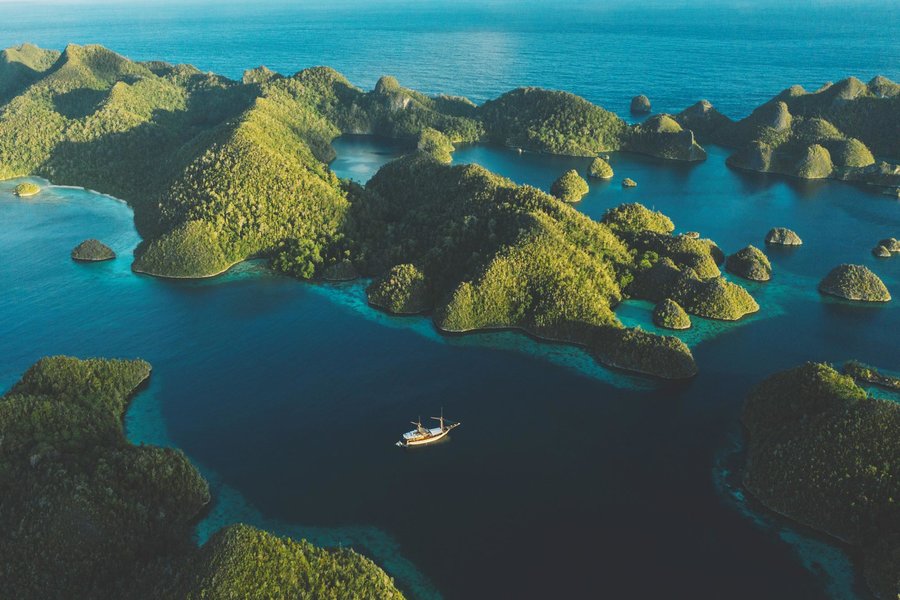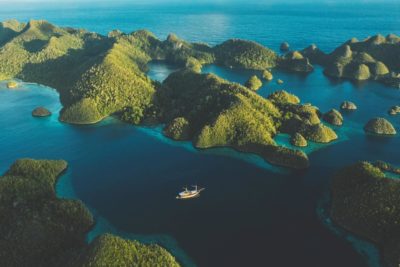


Thousands of jungle-coated islands—plus crystalline waters teeming with exotic fish, sharks, and rainbow corals—make a compelling case for touring West Papua, Indonesia’s remote Raja Ampat archipelago.
What a difference a decade can make. In 2005, when Misool Eco Resort co-founder Marit Miners first visited Misool, one of the four largest islands of Raja Ampat in West Papua, Indonesia, it was because she’d heard it was ground zero for marine biodiversity. Yet she crossed paths with not a single live shark in a month of diving. What she did spot, however, was an itinerant shark finning camp on a pristine white sand beach. This archipelago thousands of islands strong in the Coral Triangle doesn’t lack for the snowy latter, enchantingly devoid of tourists and idyllic for swimming. But now, thanks to efforts by Marit, her husband, Andrew Miners, the wildlife nonprofit WildAid and other key partners, there’s once again an abundance of the finned variety in the recently designated “conservation province.” A first for Indonesia, this protective legislation was three years in the making.
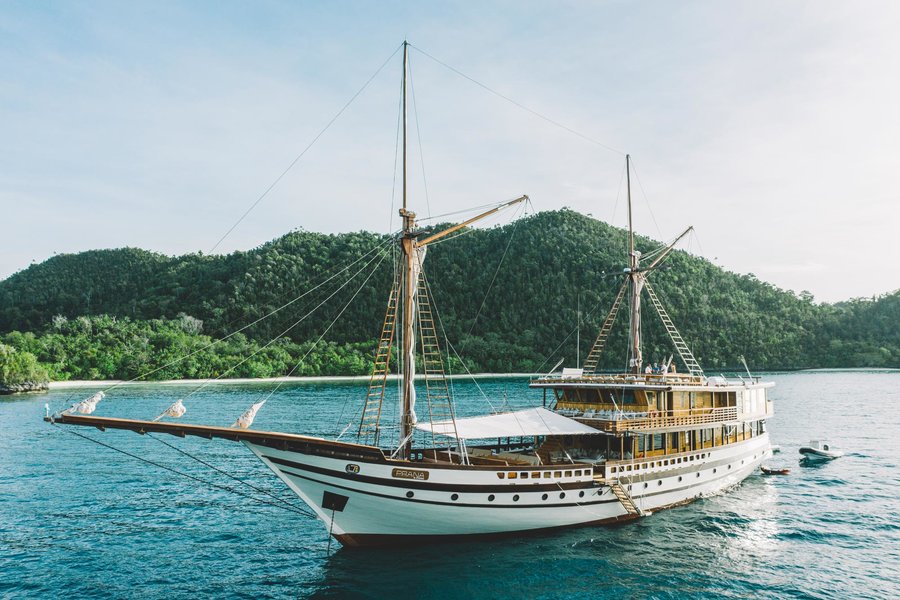

Courtesy Prana By Atzaro
The fairytale story of how sharks and other apex predators became a thriving population in just years is as strong an argument as any for the importance of wildlife conservation through effective, replicable enforcement programs. WildAid—a leader in building marine protected areas worldwide—provided funding that went to safety and surveillance equipment, a patrol boat, and operations to deter poachers, going so far as to advise Misool (opened in 2008) to hire former shark finners as rangers catching these illegal fishermen who also practiced reef-destroying dynamite fishing. The results were dramatic, with illegal fishing down 80% and fish populations increasing 250%. (This was by no means a rare situation: According to WildAid marine director Meaghan Brosnan, one of every five pounds of fish in the world is still harvested illegally.)


Courtesy Prana By Atzaro
Appreciation and respect through firsthand experiences often drives protection of endangered and hunted creatures. What a dream, though, for tourism to not only not have a negative impact but actually cause improvement. Its incredible remoteness has been good for Raja Ampat, one of Earth’s most biodiverse regions, with a staggering 1,800-plus species (it’s where almost 300 species were counted on a single dive) and counting, yet extremely little known. Tourism exists, but with mostly family-owned homestays available for accommodation, it’s typically been passionate watermen and women who rough it in exchange for once-in-a-lifetime subaquatic encounters.
That’s slowly changing. In fall 2018, the Ibiza agrotourism hotel Atzaró launched Prana by Atzaró, a luxurious 55-meter charter yacht crafted in the South Sulawesi–specific, UNESCO-protected phinisi method—with a collage of seven sails and sprawling decks of warm ironwood and teak that glow in the equatorial sun. (Eco awareness is a key element, with only reef-safe amenities and SPF provided, and zero single-use plastic.) Setting off from Sorong, onboard with 10 others (the capacity is 18 guests), we crossed paths with few small boats dotted with divers, geared up in wetsuits and oxygen tanks, amped to spy mantas and walking sharks, a bizarre endemic species only found around Misool.
Mostly, my memories are filled with what captured me under the surface: a psychedelic diversity of color, texture, and shape that seemed to connect in some root way to everything made by man. This pure and ancient world, it seemed, is the most divine inspiration.
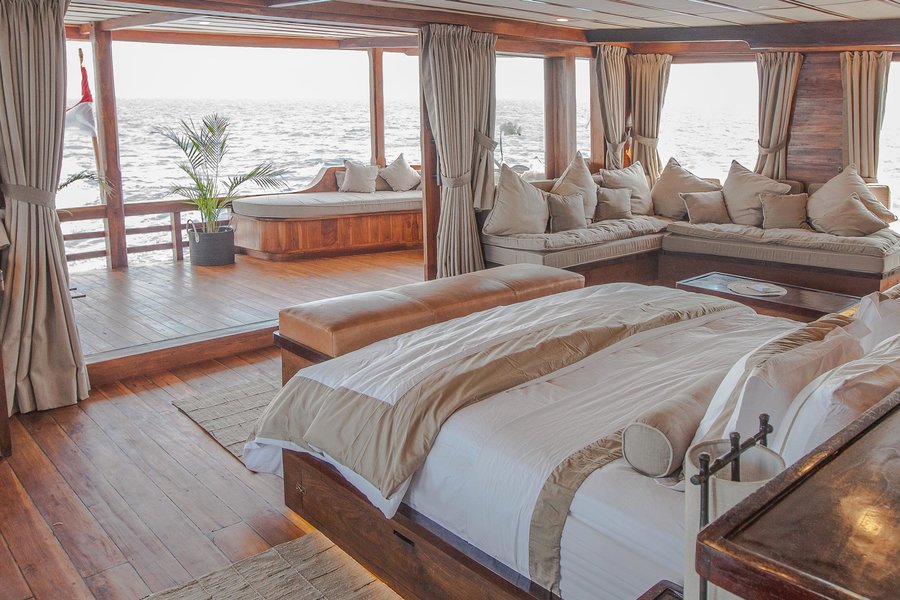

Courtesy Prana By Atzaro
We cruised from verdant island to island, plunging into the sapphire sea several times a day to dive or snorkel around limestone walls, through jetty pilings scaly with fan corals like you might see decorating a coastal home. Once I slowed over a desolate section that looked like a boneyard, corals damaged and killed by repeated anchoring. Overwhelmingly, the reef is pulsing, breathing with life and swirling in the swell—far more alive than any aquarium. Although Prana by Atzaró is not staffed by marine biologists, staff dive instructors adeptly pointed out hefty bumphead parrotfish and slews of angelfish. (The fish we ate onboard were quite different, sustainably caught and cooked as flawlessly as you’d expect in a Michelin-starred dining room, every time, by Javanese chef Fauzi Gusdimsyah.)
A lush liveaboard is one breathtaking way to experience the archipelago, complete with the freedom to take a paddleboard or kayak to untouched beaches, gliding atop sea turtles and spaghetti-like corals at your pleasure. Galapagos this is not, where every stop is regulated and pre-approved by the government. Here you almost feel like the first explorer to float through the aquamarine water, so perfect yet in deeper passageways, occasionally marred by plastic bags, food wrappers, and single-serve sachets. Still, far more prolific than plastic were stingless jellyfish, which suddenly surrounded us one day in the water. Light panic subsided when, after a few minutes, they’d caused no harm, and I gave into the surreal mind-body sensations of swimming through the clear masses, electrified in delicate red and green threads when sunlight glinted just right.
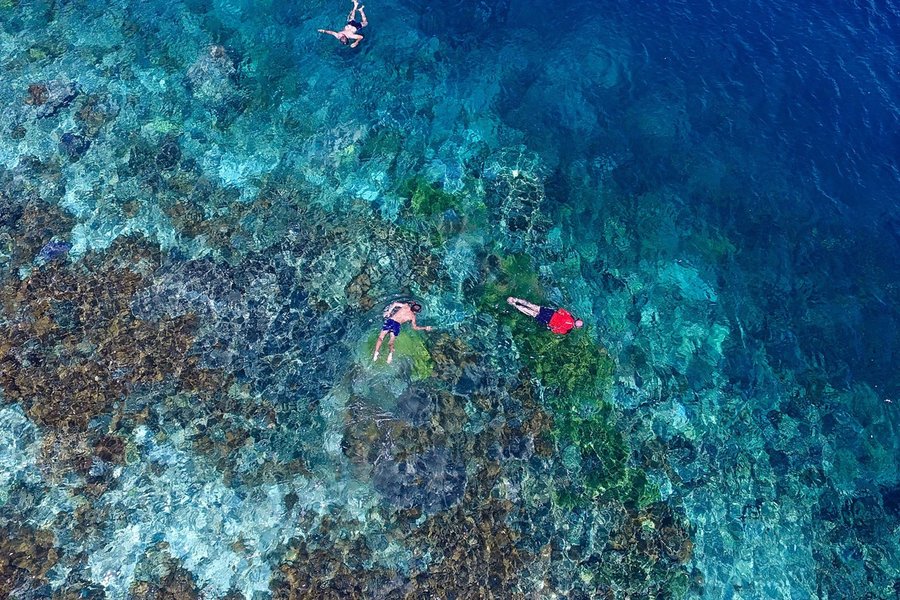

Courtesy Prana By Atzaro
Prana by Atzaró’s itineraries are customized to the group’s desires, be they snorkeling with mantas or climbing limestone karst pinnacles like on Wayag for world-class views of indigo dip-dyed waters dotted with jagged island outcroppings. Couples or individuals can opt for a spot on Aqua Expeditions’ new 15-suite Aqua Blu cruising through the isles on seven- and 12-night itineraries from December to February. Misool Eco Resort is the ultimate destination for those seeking deeper immersion underwater, as diving is as strong a focus as conservation. (The resort is striving for zero carbon footprint by 2022.) Just a few years after they’d expelled shark finners from their lagoon—who had been paying the local village $30 per month for the privilege of taking anything they wanted from the sea—the Miners were shocked to see baby sharks. Now, the Misool Marine Reserve, a no-take zone that’s ballooned to 300,000 acres of water, plus nine uninhabited, forested islands, is rich with the species.
Miners and others are still waiting to see the result of West Papua’s conservation designation. Hopefully, it’s like a time capsule for the mangroves, coral reefs, rainforests, and indigenous communities that represent such natural wealth. The bold, public move certainly spotlights its importance, as well as the threats coming from all sides. Ultimately, says Miners, “my hope is that this will add a bulletproof layer of protection for Papua, for generations to come.”
Stay in touch and get the latest WildAid updates.
SIGN UP
